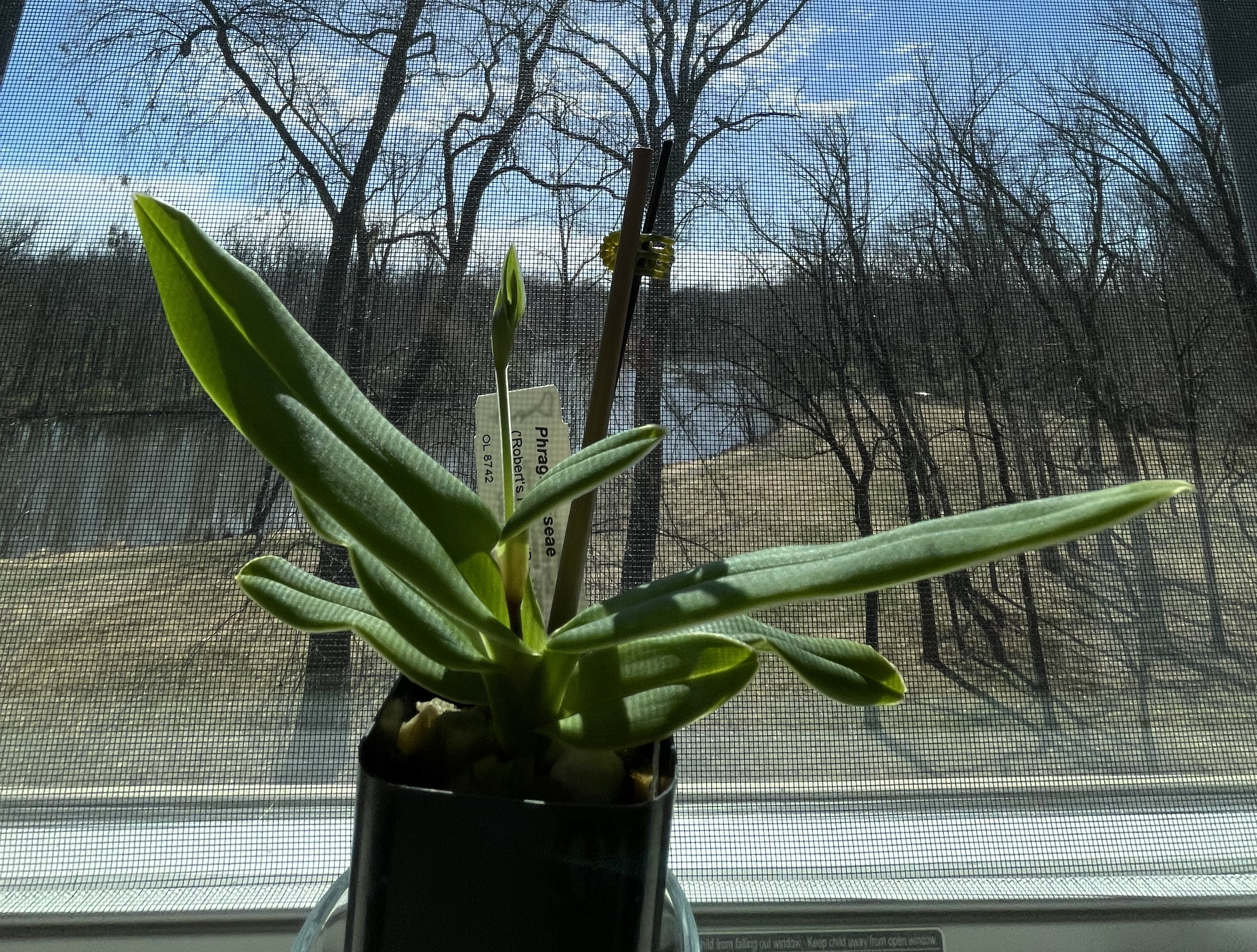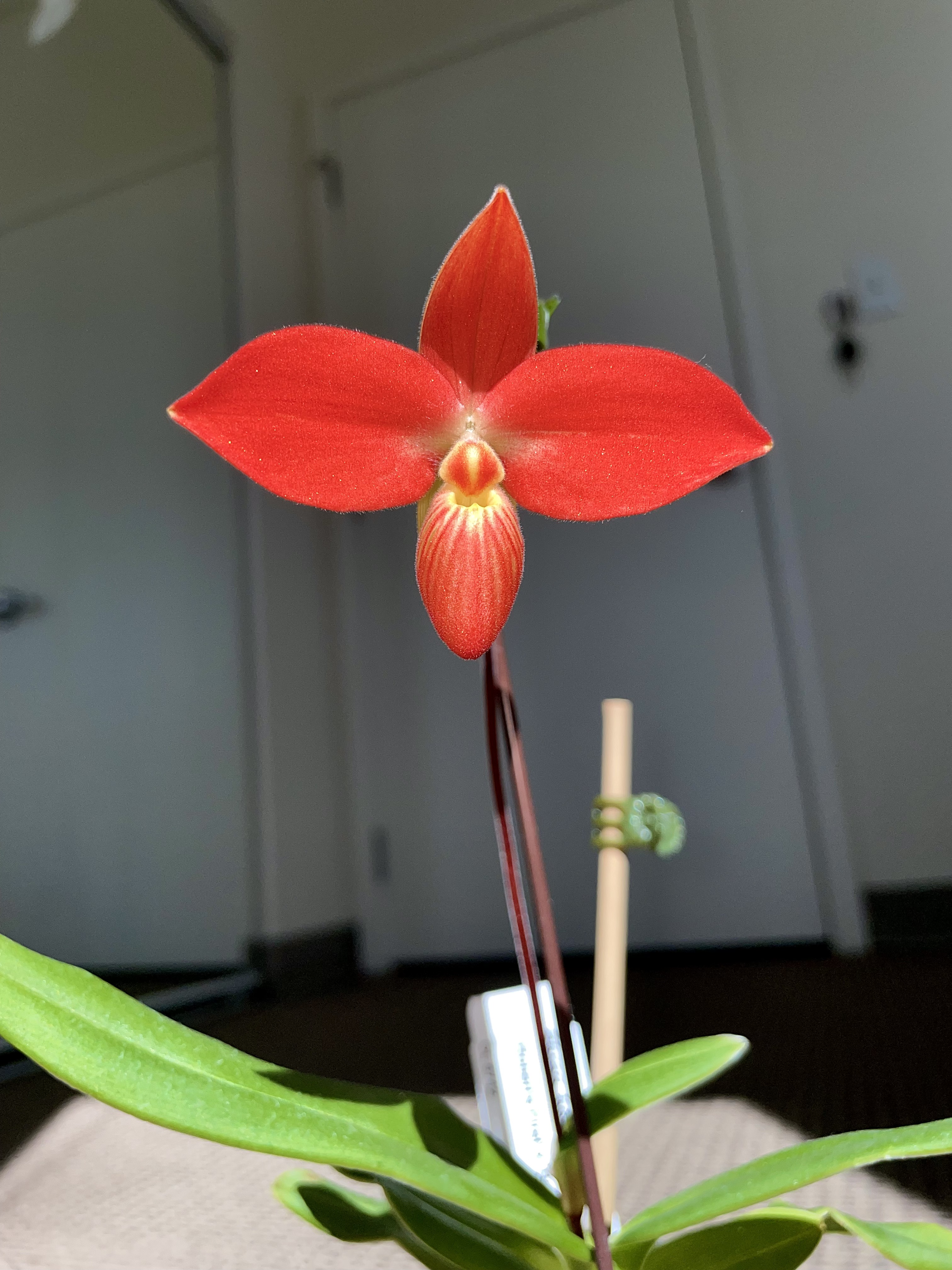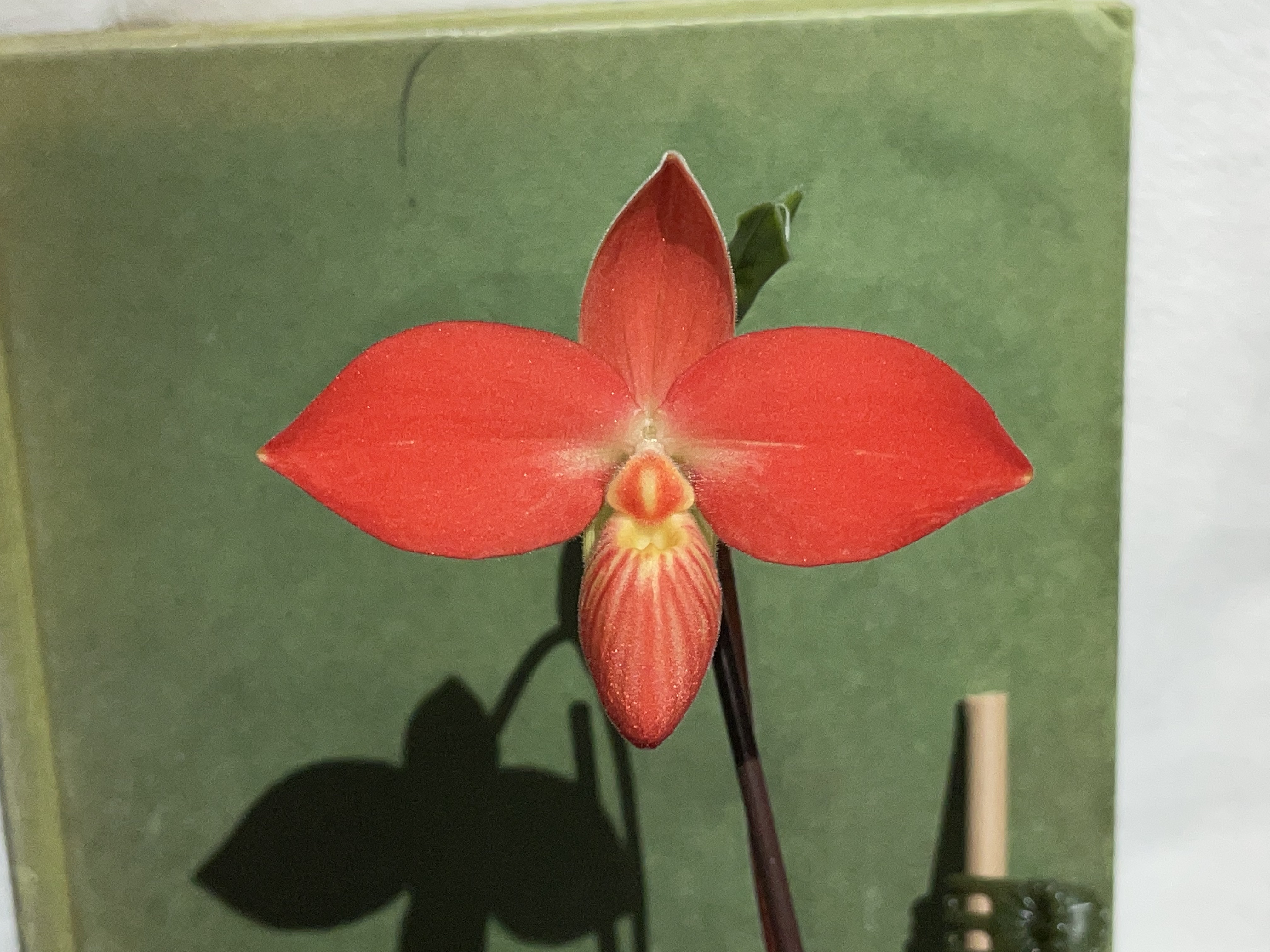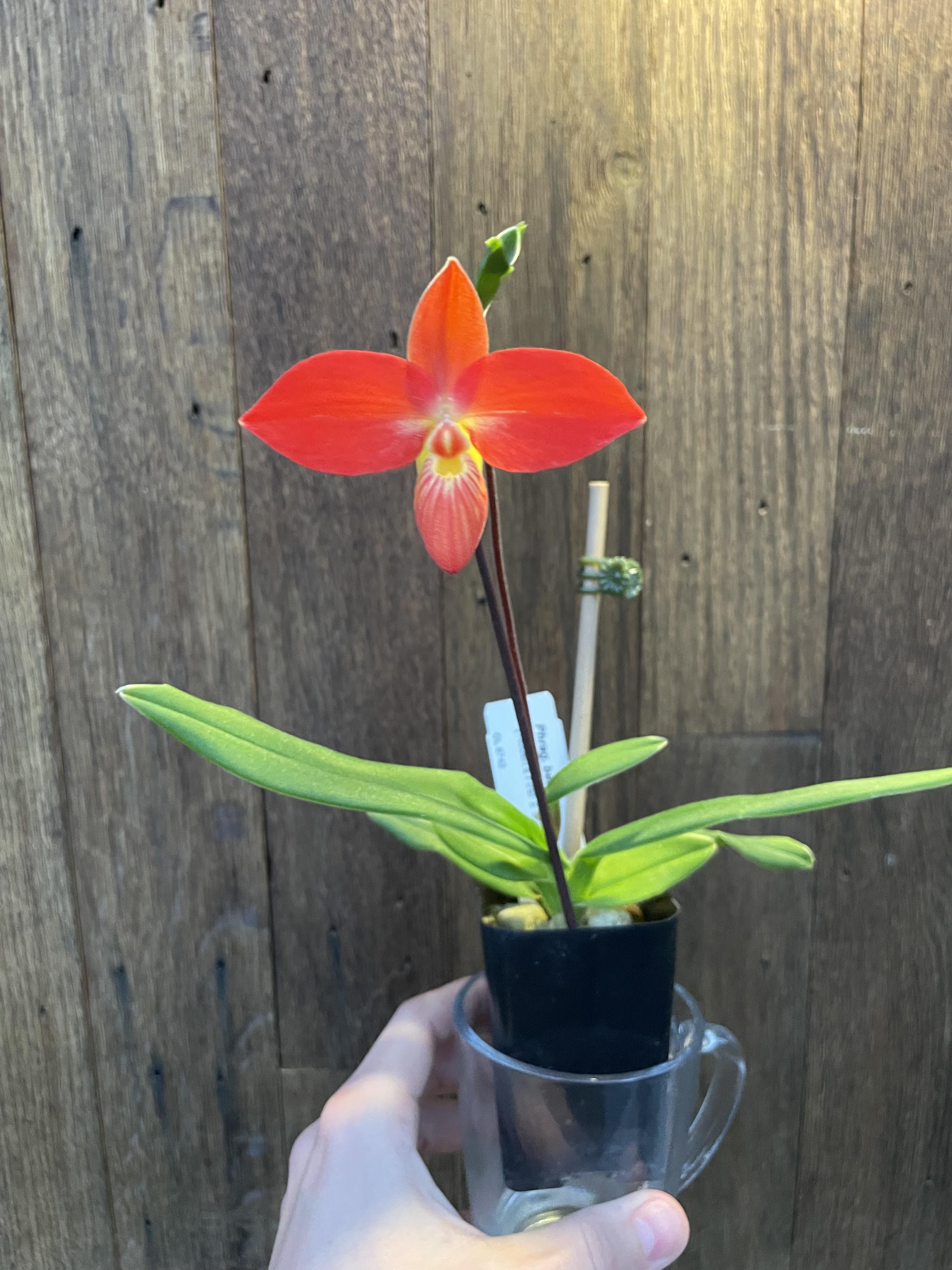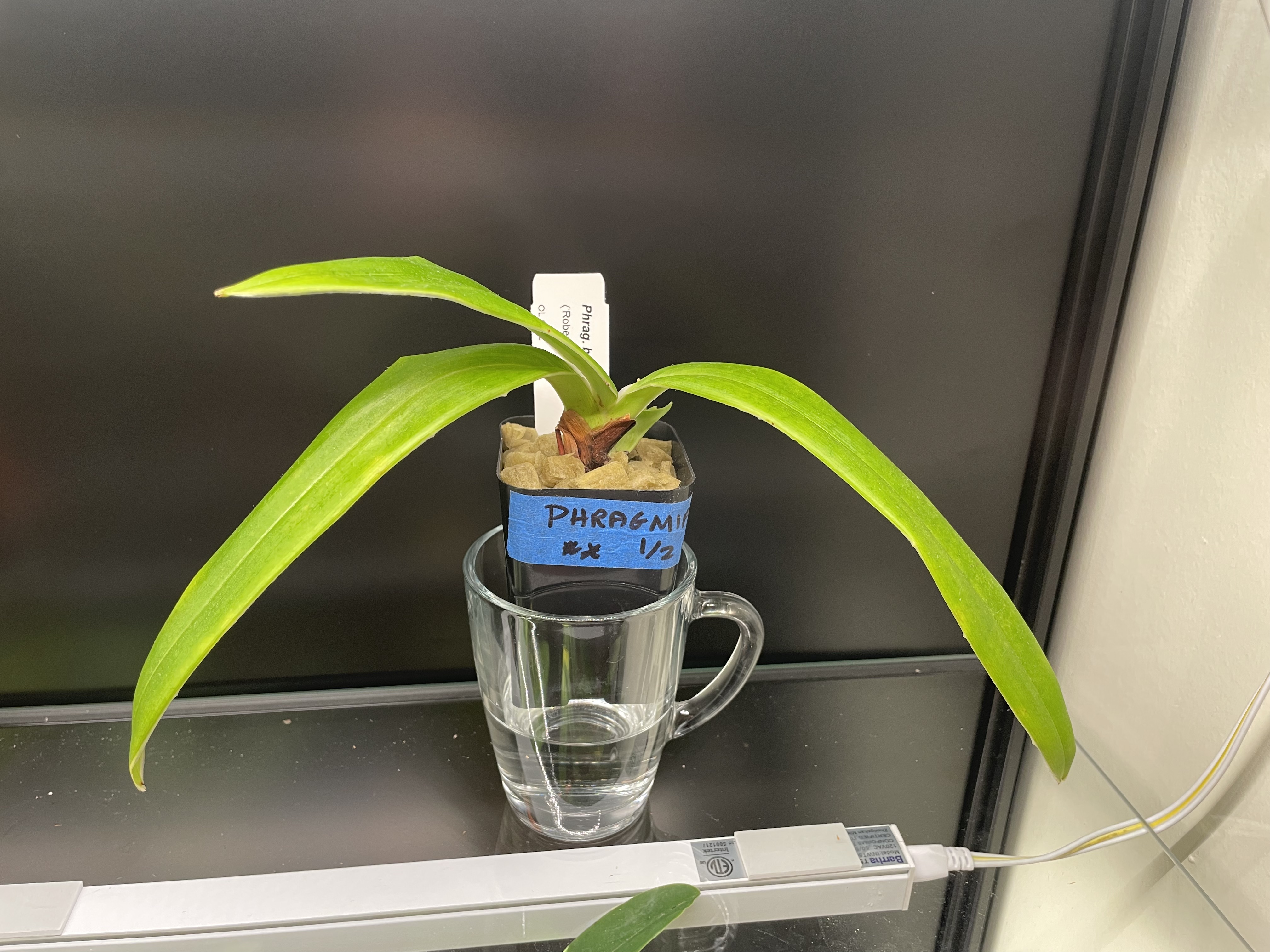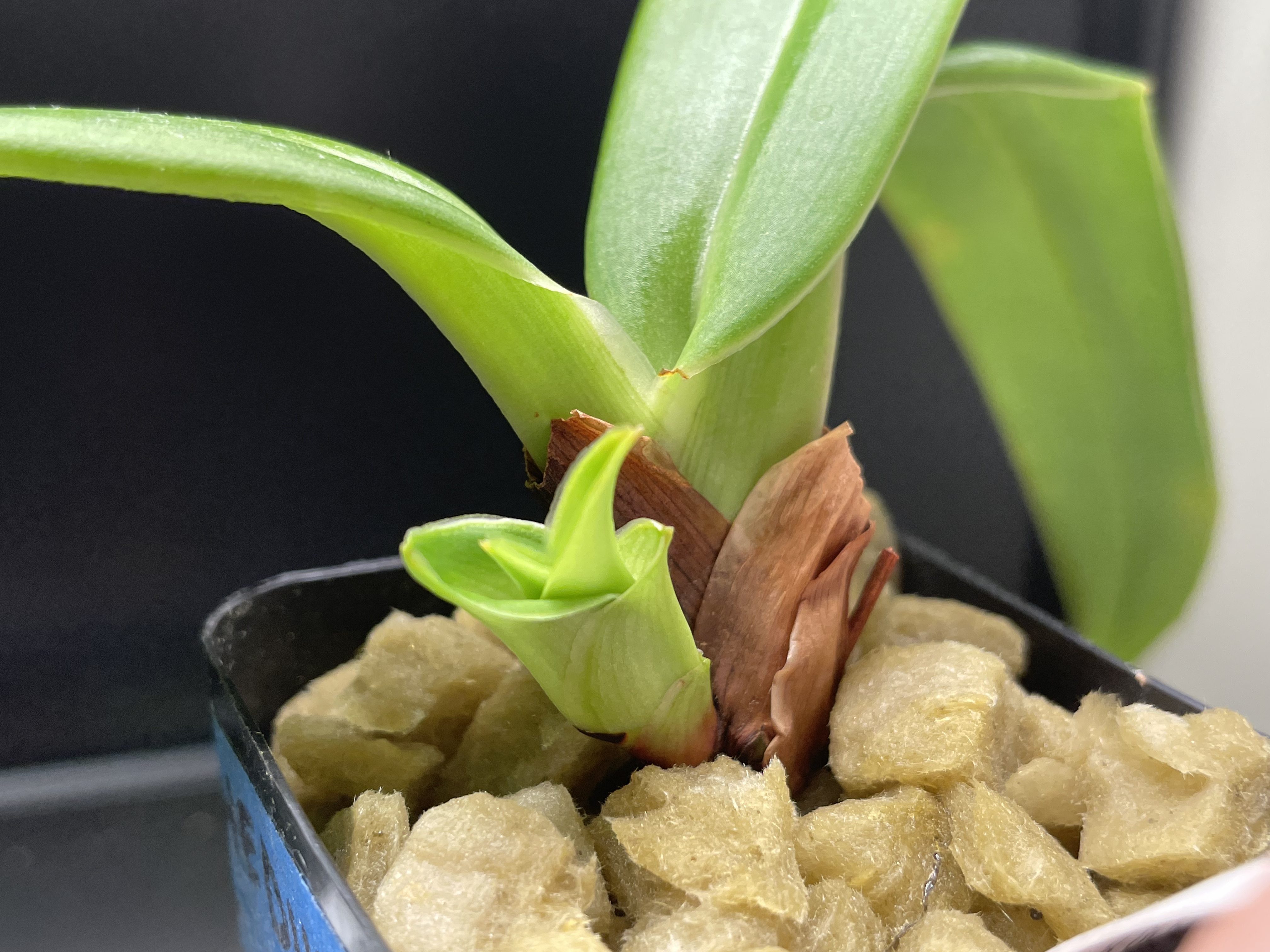gdupont
Well-Known Member
I have a Phrag besseae, it's a very pretty cross from Orchids Limited. I got it as a single growth, in spike, in May 2022.
It flowered beautifully, and eventually started growing a new growth, and the mature growth died by the end of 2022. The new growth lasted through the spring, and then again it put out a new growth and the mature growth died. Now, in Sept 2023, the cycle seems to be starting for a third time, as a new growth is popping out and the mature growth has lost one leaf so far. It did not bloom again.
It's growing in rockwool. I water it with tap water, which as far as I know is fairly clean. I rarely fertilize it, with MSU, typically only in the late spring. It grows on a windowsill, the leaves are not too dark green, they're a bit lighter green but not so light green that it's clearly getting ample sunlight. The leaves always look healthy – no discoloration and no burnt tips. Typically has about 3 - 4 leaves.
I know I'm probably doing a lot of things wrong here: tap water, rare fertilizing, maybe not enough light. But I'm not sure which is most important to change. I'd like this plant to be multi-growth and flowering, even if just occasionally! What should I focus on doing better?
I just moved the plant into a glass cabinet with Barrina T5 lights. Day temp is ~80F and night temp is ~70F. I hope this will help it.
Many thanks.
It flowered beautifully, and eventually started growing a new growth, and the mature growth died by the end of 2022. The new growth lasted through the spring, and then again it put out a new growth and the mature growth died. Now, in Sept 2023, the cycle seems to be starting for a third time, as a new growth is popping out and the mature growth has lost one leaf so far. It did not bloom again.
It's growing in rockwool. I water it with tap water, which as far as I know is fairly clean. I rarely fertilize it, with MSU, typically only in the late spring. It grows on a windowsill, the leaves are not too dark green, they're a bit lighter green but not so light green that it's clearly getting ample sunlight. The leaves always look healthy – no discoloration and no burnt tips. Typically has about 3 - 4 leaves.
I know I'm probably doing a lot of things wrong here: tap water, rare fertilizing, maybe not enough light. But I'm not sure which is most important to change. I'd like this plant to be multi-growth and flowering, even if just occasionally! What should I focus on doing better?
I just moved the plant into a glass cabinet with Barrina T5 lights. Day temp is ~80F and night temp is ~70F. I hope this will help it.
Many thanks.
Last edited:




